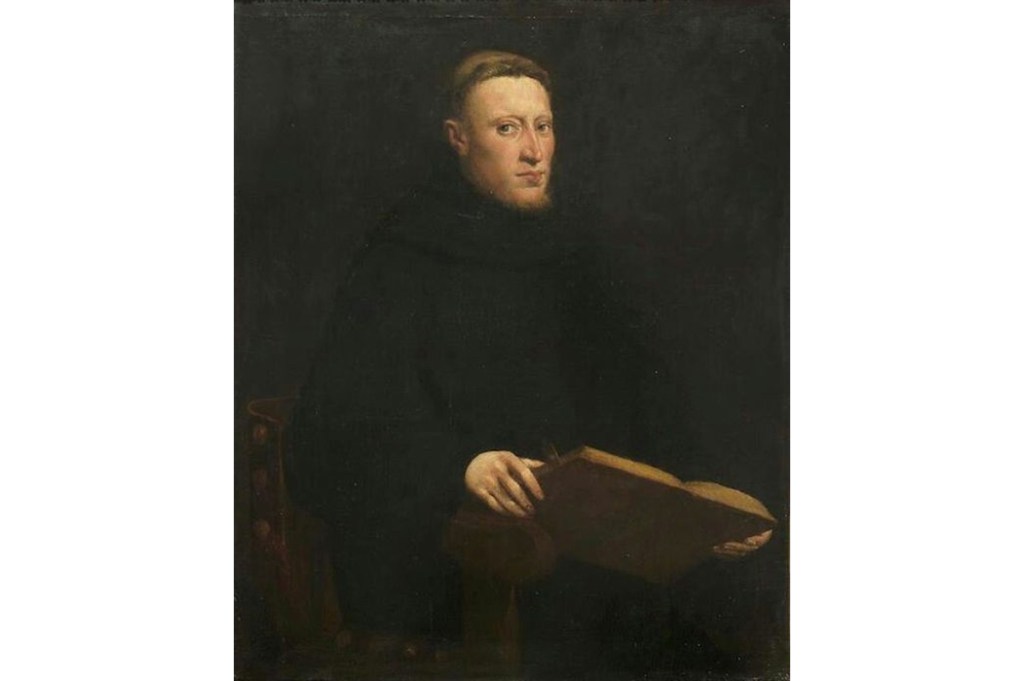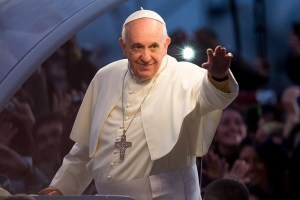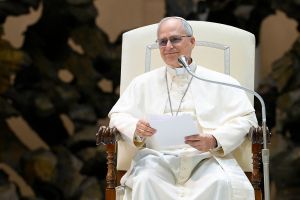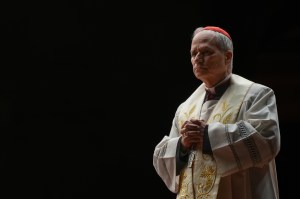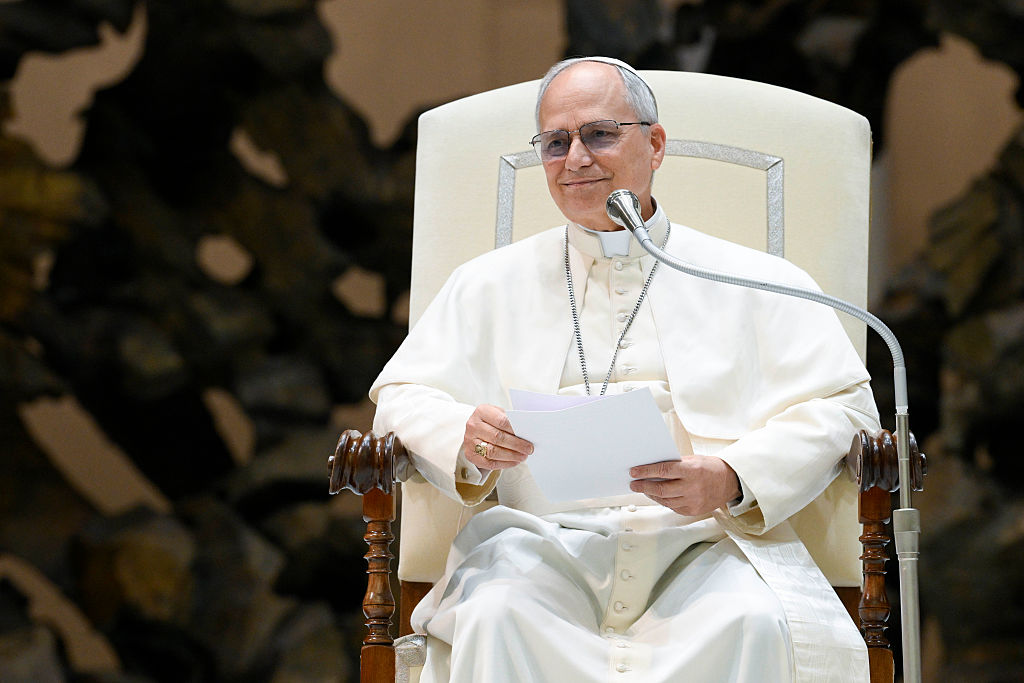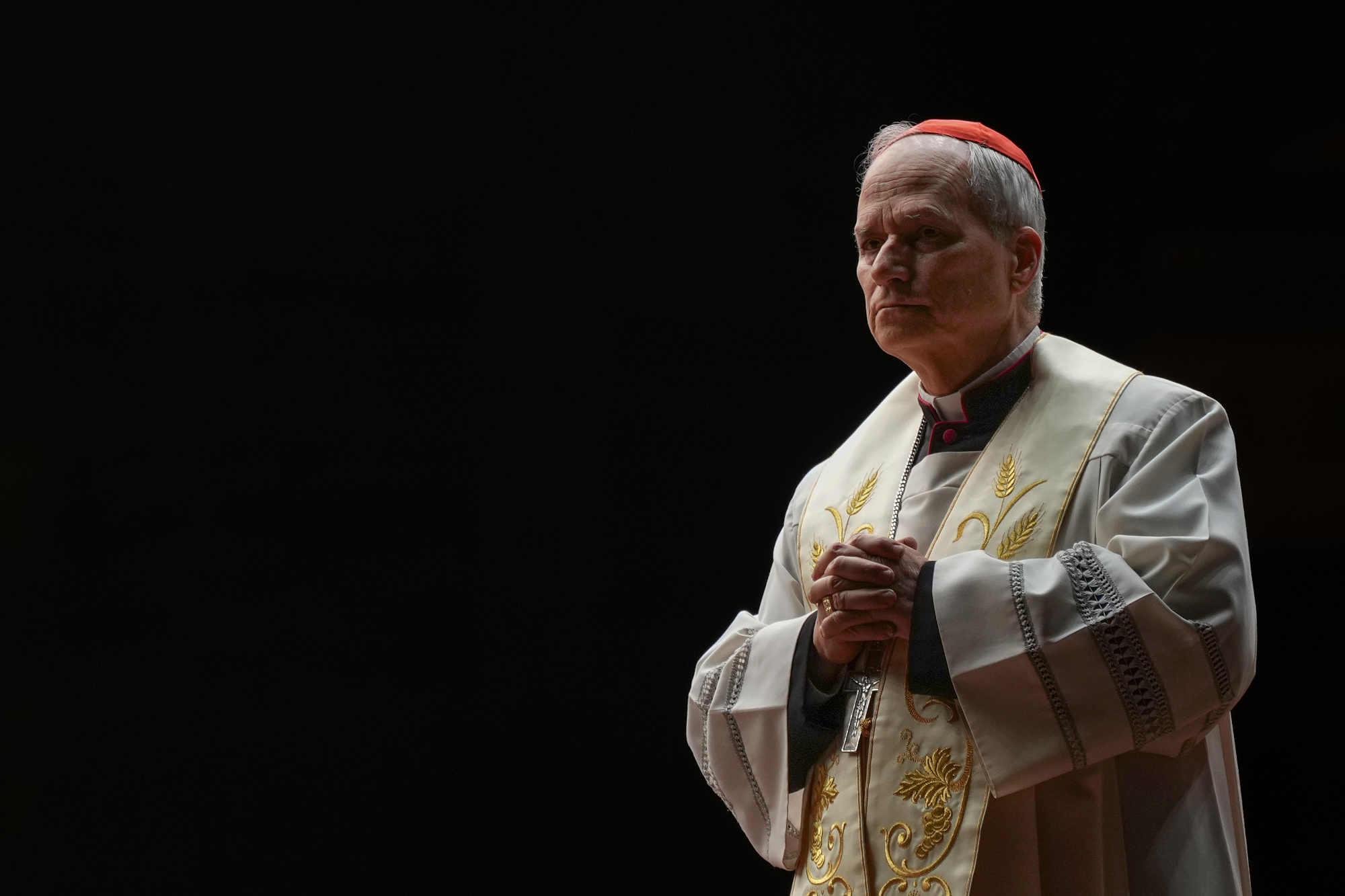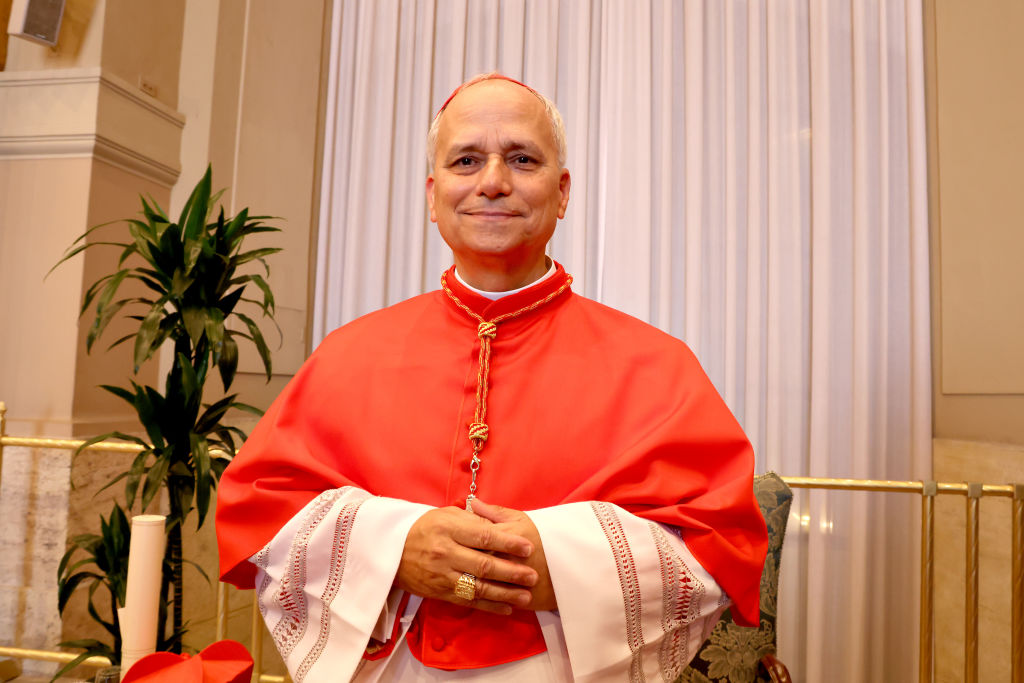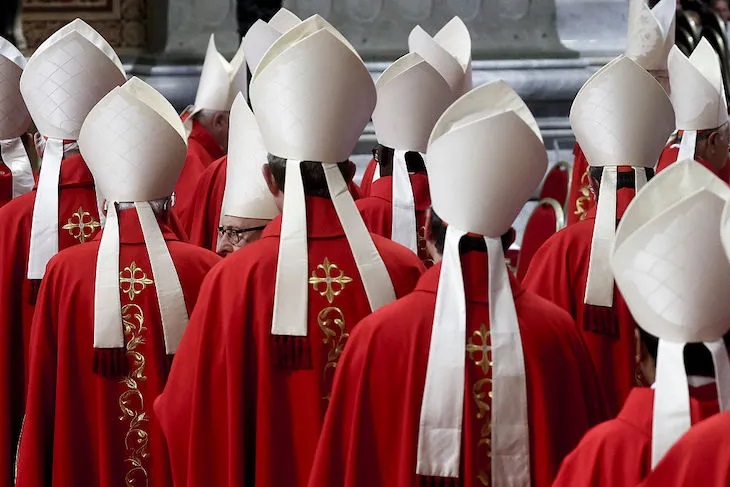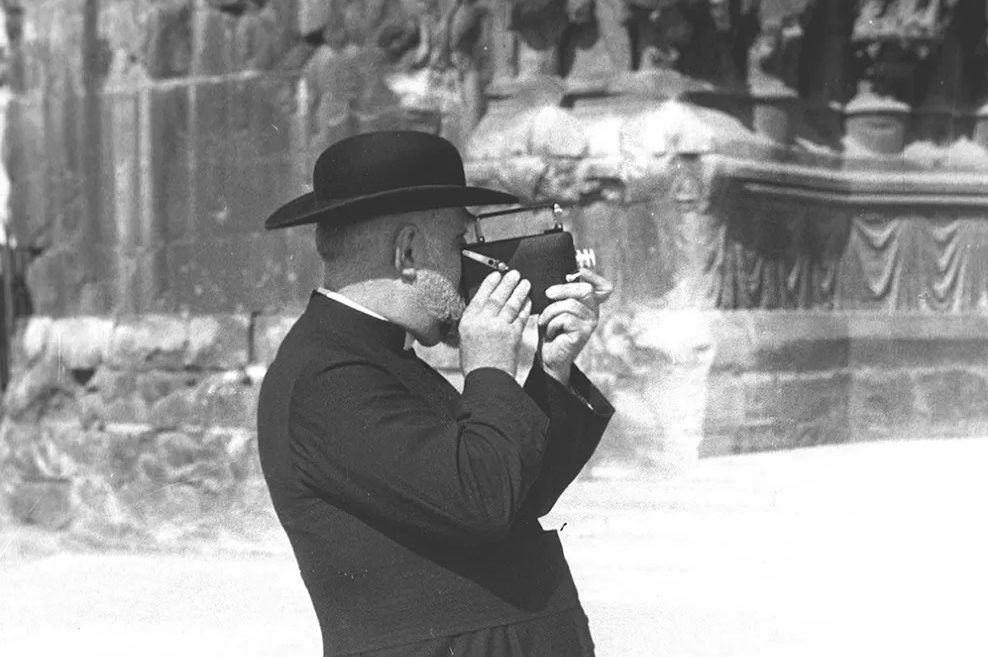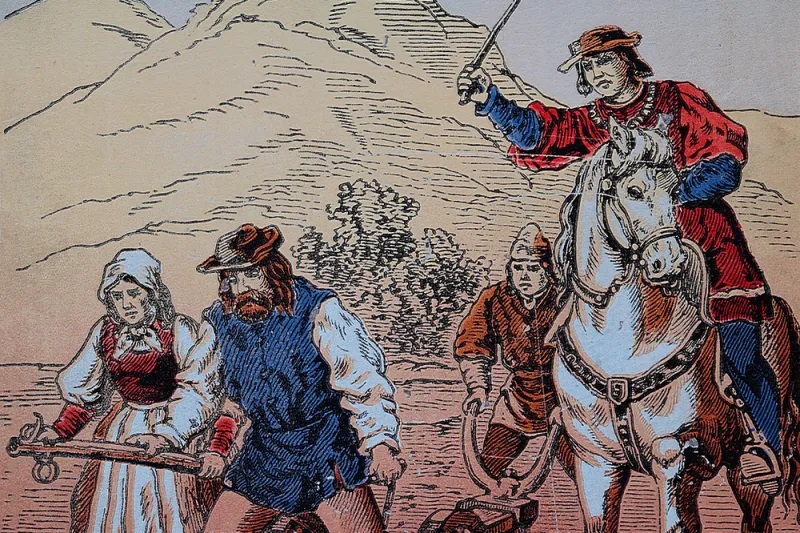Just over 500 years ago, in June 1519, the castle hall of the German city of Leipzig was expecting a throng of spectators. The room had been specially decorated: two pulpits stood dramatically facing each other. Under the eyes of the Duke of Saxony, Martin Luther was challenged to defend some of his writings by which he attacked abuses in the Church. The scene was set for an intellectual battle — a rebellious friar, Luther, taking on the Catholic establishment. Physical threats made the atmosphere all the more tense. Two hundred axe-wielding students accompanied Luther. His opponent, the Catholic theologian Johann Eck, protected himself with 76 armed guards. Their ensuing debate dealt to a large degree with history. It turned out to be a defining moment in the nascent Protestant Reformation.
As much as a battle for the present, the Reformation was quickly becoming a battle for the past. One of the arguments at Leipzig was about papal primacy — the idea that the pope had universal authority over all other bishops, and that it was even lawful for him to depose emperors. In the debate, Johann Eck maintained that the Roman Church derived its special dignity because St Peter, who died in Rome, was the successor of Christ. Luther argued that this was false — and that the pretense of Rome’s superiority stemmed from the ‘ice-cold’ decrees of the popes of the preceding 400 years. For Luther, it was a crucial insight gained from the study of historical evidence that papal primacy was not established by divine right but was instead created by mere human actions. Having discussed this and other questions about church history in Leipzig, the furious Luther reached the moment where he willingly abandoned the Catholic fold.
Historians have long recognized that papal primacy is an idea which gradually developed through the Middle Ages. A pope who catapulted this idea into new heights was Gregory VII, who reigned from 1073 to 1085. Right after his election, Gregory broke with tradition by not asking for the approval of the German king Henry IV. A request for approval was customary and expected because the Holy Roman (German) Empire, along with the papacy, was the most important institution in Europe. Fanning the flames, Gregory also aimed to abolish royal control of bishops. All this led to his well-known, dramatic conflict with the Empire, during which Gregory excommunicated the German king twice.
Not surprisingly, Gregory was vilified by German Protestants of the Reformation period, who saw him as a diabolical monster; to the Protestants, Gregory was proof that the Church had become power-hungry and corrupt in the medieval period. Catholic theologians, on the other hand, argued that Gregory was a legitimate defender of the Church’s rights — and that the Church had never abandoned its original ideal of being a shining reflection of the truth. By the mid-16th century, it had become all but impossible to engage in measured, source-based research and to construct a balanced treatment of Church history.
It took another friar from Luther’s old order, the Augustinians, to break the deadlock: the Italian Catholic Onofrio Panvinio (1530–1568). Working in Rome under the protection of the Church’s wealthiest cardinal, Alessandro Farnese, Panvinio was one of the few full-time historians in Italy at the time. He traveled up and down the peninsula to track down sources on the history of the papacy, and came up with an original approach to his subject. Going back to earlier, medieval methods of history writing, he collected copies of original documents to inform his history. In addition, he applied the critical methods developed by Renaissance humanists to gauge the validity and age of these sources. Lastly, and perhaps most importantly, he attempted to come to balanced historical judgments.
Although he was a Catholic, Panvinio wrote a biography of Pope Gregory VII which was critical of Gregory’s program to exalt the power of the papacy over temporal rulers. His extensive life of Gregory began conventionally enough. This pope was a ‘most memorable man’ and ‘very necessary’ to the Roman Church. For the liberty of the Church, he had done many things against the emperor which were ‘worthy of memory’.
Treating the childhood of Gregory, however, Panvinio showed himself a sceptic. He recounted two omens which foretold of the young boy Hildebrand’s future greatness as pope. As some purported that he was the son of a carpenter, an omen was connected to his family background. The little child had played with shavings of wood on the ground and formed with them the words ‘I will have dominion from sea to sea’ (Psalm 72:8), projecting his future rule over the universal Church. A learned man who saw this convinced Hildebrand’s father to let him have an education.
Panvinio commented that he did not know which ‘storyteller’ had invented this clumsy tale. In the course of his education, the young man Hildebrand arrived at the imperial chancery, where — this is the second omen — the emperor Henry III received a warning in a dream. He saw Hildebrand with horns with which he crushed his son, Henry IV. He therefore had Hildebrand thrown into jail, from which the empress Agnes freed him and let him move on to a Cluniac monastery. Panvinio concluded that the inventor of these stories was ‘a very fickle man who should be laughed at’.
One can suspect that Panvinio rejected these stories not simply because they patently belonged to the realm of legends; had they served his purpose, he might well have endorsed them. In fact, in other cases he cited stories of such type without qualms — for example, when he recounted the story of a dove which settled on Giovanni Angelo Medici’s cell in the Sistine Chapel to foretell his election as Pope Pius IV in 1559. This recalled the election of Pope Fabian, who was chosen following the same divine sign when a dove settled on his head in 236.
Another reason came into play here with regard to Gregory VII. By ridiculing certain stories about Gregory, Panvinio elegantly and ironically cast a shadow of doubt over his career and his claim to temporal dominion. This attitude became more explicit as the biography continued. Regarding Hildebrand’s election as pope, Panvinio insistently made it clear that the election took place without the emperor’s consent. Not only did Panvinio state this once, but he repeated it half a dozen times over the course of a few pages.
What followed was an historical excursus on certain privileges which the emperors, in Panvinio’s view, had received from the popes. Panvinio reached back into history and summarized the development of imperial intervention into papal election from the Carolingian period in the eighth century onwards. As a price for their protection of the papacy, Frankish rulers had been given a degree of control over papal elections.
Gregory VII detested such worldly interventions into ecclesiastical affairs. He became most explicitly hostile at a Roman synod in 1080, during which, as Panvinio wrote, he ‘openly spewed out what he had long designed and what he had gradually indicated in other decrees’. On this occasion, Gregory promulgated a decree by which he sought to strip the emperor not only of his right to elect the popes but also of the right to invest any other prelates.
These examples may make it seem as though Panvinio plainly stood on the emperor’s side in his treatment of the church-state conflict. However, Panvinio’s course can best be described as idiosyncratic. The historical sources which he used and quoted were partly favorable to the papacy and partly favorable to the Empire.
Panvinio seemed to praise Gregory profusely for many of his personal qualities. He was ‘a very constant man, tenacious in his right pursuits, one who never — neither because of threats nor because of requests — strayed a finger’s breadth from the right path’. Gregory was also a ‘man of the ancient stamp’ and he ‘should be compared to those early popes who endured various forms of torture for Christ; he was bold, prudent, cautious, and the greatest restorer of the liberty of the Church’.
Of course, such praise could hide some criticism. Panvinio may have praised Gregory’s tenaciousness to make it clear that Gregory was, in fact, a hardheaded fanatic. While he had shown that Gregory was tenacious, bold and incorruptible, he had much less convincingly illustrated that Gregory was prudent and cautious. Panvinio aimed to furnish a comprehensive picture of this pope. He did not include Gregory’s defects when he described his character; but they were included in the account of his actions, where Panvinio revealed that he disapproved of Gregory’s overambitious attempts to secure temporal authority and power for the Church.
That a measured historical treatment of papal history was possible in Rome in the 1560s may come as a surprise to readers versed in Catholic history. In a unique way, Panvinio was a papalist, Catholic Reformer and diligent historian all at the same time. Yet the brief window of creative and critical papal history closed again almost as soon as it had opened. After Panvinio’s premature death, on a trip to Sicily in 1568, his manuscript works were withdrawn from circulation — they were kept in the Vatican but prevented from being printed. In 1609, the German Jesuit Jakob Gretser wrote that Panvinio, by gathering historical sources critical of Gregory VII, had sometimes strayed from the right path. Gretser’s Swiss adversary Melchior Goldast, on the other hand, praised Panvinio for his ‘unrestrained voice, constant spirit, truthful pen and bold style’. The jurist Hugo Grotius commented that Panvinio, ‘in the city of Rome was not afraid to write the truth’.



